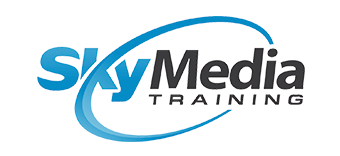Drone Flying License: Step-by-Step Guide for Australian Drone Pilots
Are you ready to turn your drone flying skills into a professional career? In Australia, getting a drone flying license (officially called a Remote Pilot Licence or RePL) is essential for anyone who wants to operate drones commercially. Follow this guide to understand each step of the process, from training to taking the flight test and beyond.
Step 1: What is a Drone Flying License?
A drone flying license is your ticket to flying drones commercially in Australia. It’s regulated by the Civil Aviation Safety Authority (CASA) and is required if:
- Your drone weighs more than 2kg.
- You’re flying drones for commercial purposes in industries like real estate, media, surveying, or agriculture.
With a RePL, you’re legally permitted to:
- Fly drones in controlled airspace with proper permissions.
- Use more advanced drones like the DJI Inspire 3 or DJI Matrice 300.
- Work in higher-paying sectors where certified pilots are required.
Step 2: Choose the Right Course for Your Needs
Before you get your drone flying license, you need to pick a course that suits your operational needs. There are two main categories to consider:
- 7kg RePL Course:
Ideal for operators in industries like media, real estate, and small-scale agriculture, this course covers drones weighing up to 7kg. Most hobbyists-turned-professionals start with this course. - 25kg RePL Course:
Required for heavier drones, often used in industrial applications like infrastructure inspections or large-scale agricultural work. If your projects require more advanced drones, you’ll need this certification.
Step 3: Complete the Theoretical Training
The first part of your RePL training involves theory. You’ll learn the rules and regulations governing drone flights, including:
- Airspace classifications: Understanding where you can and cannot fly.
- Weather conditions: Knowing how weather impacts flight safety.
- Safety and risk management: How to conduct risk assessments before flying.
- Flight rules: Covering topics such as minimum distances from people, buildings, and restricted zones.
At SkyMedia Training, our courses are 100% in-person, which ensures you fully grasp these concepts through direct interaction with instructors rather than relying solely on online modules.
Step 4: Get Hands-On Flying Experience
Once you’ve completed the theory, it’s time to take to the skies! In the practical phase of your training, you’ll learn:
- Drone controls: How to perform take-offs, landings, and precision movements.
- Advanced flight techniques: Navigating through complex environments, flying in challenging weather conditions, and obstacle avoidance.
- Emergency procedures: What to do if you lose signal, experience a low battery, or face any other flight complications.
In-person training is key during this phase because it ensures you’re well-prepared for real-world conditions, something online simulations simply can’t provide.
Step 5: Pass the Flight Test
After your practical training, the final step to earning your drone flying license is the flight test. This test is designed to ensure that you:
- Can conduct pre-flight checks.
- Understand how to navigate different types of airspace.
- Can safely control your drone in real-world scenarios, including responding to emergencies.
Upon successfully passing your flight test, your instructor will submit the results to CASA as part of your official application.
Step 6: Submitting Your Application to CASA
With the training complete and your flight test passed, you’ll need to submit your RePL application to CASA. This typically includes:
- Proof of your completed training and flight test.
- Required personal details and documentation.
Once CASA processes your application, you’ll receive your drone flying license, officially certifying you as a commercial drone pilot in Australia.
Step 7: What About Additional Certifications?
A drone flying license is your main certification, but there are additional qualifications that may be required for more advanced operations, such as:
- AROC (Aeronautical Radio Operator Certificate): Essential for flying in controlled airspace, where you’ll need to communicate with air traffic control.
- ReOC (Remote Operator Certificate): If you plan to run your own drone business or manage a team of operators, you’ll need an ReOC, which allows you to conduct large-scale operations legally.
Step 8: Renewing Your Drone Flying License
Your drone flying license will need to be renewed periodically to ensure that you remain compliant with CASA’s evolving regulations. Failing to renew your license can result in fines and loss of operational privileges, so be sure to keep track of the expiry date and stay updated with any changes to the rules.
Step 9: Mistakes to Avoid as a Licensed Drone Pilot
Even with your new license, it’s important to avoid these common mistakes that many new pilots make:
- Ignoring airspace restrictions: Always check for NOTAMs (Notices to Airmen) before flying.
- Skipping pre-flight checks: Drones, like all aircraft, require regular maintenance and checks before each flight.
- Flying without insurance: Many clients won’t work with you unless you have insurance to cover potential damage or accidents.
Step 10: What Careers Can You Pursue with a Drone Flying License?
Once you’ve earned your drone flying license, you can start building a career in a variety of industries, including:
- Film and TV production: Offering aerial footage services.
- Real estate marketing: Capturing stunning property visuals.
- Agriculture: Monitoring crops, livestock, and land health.
- Infrastructure inspections: Conducting high-level aerial inspections of bridges, buildings, and construction sites.
The demand for certified drone pilots is rising, so now’s the perfect time to turn your passion for flying into a lucrative profession.
